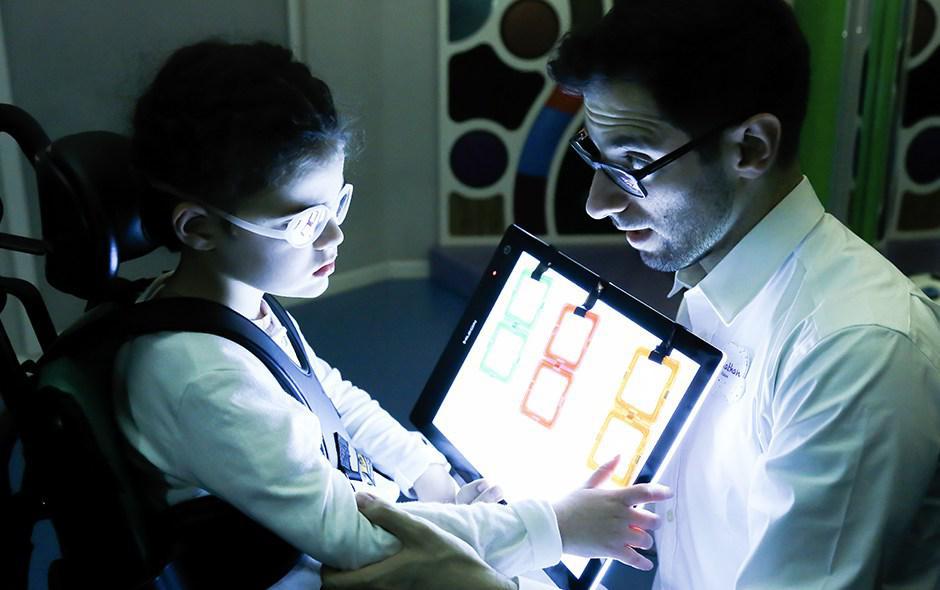Visual impairment generally refers to diminished sight, and it’s easy to assume that vision problems begin with the eyes. However, the eyes are just the first part in a complex visual system that also includes many parts of the brain: the optic nerves, optic tracts and optic radiations, (nerves relaying visual information from the eyes to the brain,) and the visual cortex (the part of the brain that converts light viewed by the eyes into meaningful images.) This then allows us to use sight in everyday activities.
Cortical Visual Impairment (CVI) is a visual impairment caused by disruption to the visual processing structures in the brain, rather than a problem with the structure or function of the eyes. Children with CVI may receive an eye exam that suggests good eye health and function by an ophthalmologist, yet they behave as though they are unable to see. Parents report that their children with CVI have little interest in toys, they don’t look at the faces of family members, or that they only appear to see when given a lighted toy in a darkened room.
What can a child with CVI see?
The culmination of current research suggests that children with CVI tend to exhibit a collection of ten visual behaviors, first synthesized by Christine Roman, Ph.D. in her instrumental book Cortical Visual Impairment: Assessment and Intervention. These ten behaviors may be present to varying degrees, and they help paint a picture of the visual constraints that children with CVI may be experiencing. These behaviors tend to include a preference for certain colors (often red), and objects that are moving instead of held still. Children with CVI may demonstrate a delay in looking at an object that is presented to them, and may tend to look at an object more when it is off to the side. Children with CVI tend to avoid highly visually complex images, such as patterned objects or an array of toys. Instead, children may prefer to look at single objects in isolation. Since the complexity of the human face may be overwhelming, children with CVI often have trouble looking their parents in the eye. They may prefer to look at lights, or blank visual fields. They have more difficulty interpreting new toys or objects, preferring to look at familiar things. When attempting to use vision to guide their reach, children with CVI may look at a desired object, decide to reach for it, then look away from the object while reaching for it.
Diagnosis for CVI includes multiple factors, and is best made through the coordinated effort of medical and vision professionals. There are three strong diagnostic components that should be considered together to best conclude the presence of CVI. These include: a history of neurological trauma, an ophthalmological report that does not accurately describe the child’s apparent level of visual function, and a careful assessment of visual function, particularly identifying the ten CVI characteristics. The CVI Range assessment, administered by a professional trained in best practices in CVI, is the gold standard of assessment.
How can a child with CVI improve their vision?
Once a child’s visual functioning has been determined through assessment, a vision specialist can develop specific, individualized interventions that target this child’s present levels of function. These interventions build on the objects and material properties the child is familiar with. As more and more CVI specific activities are developed for the child, the vision specialist can help design a “CVI Schedule” for parents to use at home. This schedule provides recommendations and accommodations to parts of the child’s existing daily routine, so that looking, identifying, reaching, and interacting can be incorporated throughout the day.
As the child is encouraged to use their vision during functional activities, they make new neural connections which improve the way they see. Through careful adaptation of the CVI schedule to accommodate new visual skills, many children progress from exhibiting very few visual skills, to recognizing and interacting with objects, even demonstrating the visual function needed for print literacy.1




